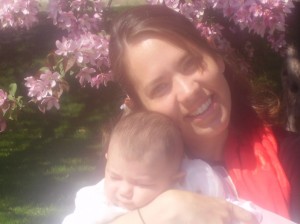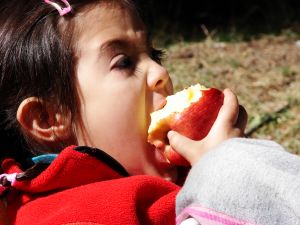By Rita Brhel, editor of The Attached Family
 The current economic climate in the U.S. is putting a lot of people on edge about where their financial futures may lie. Some people are struggling to keep their homes, others are trying to climb out from a mountain to credit card debt, and many are watching the value of their stocks plummet. It seems no one is immune to the concerns about what else may happen to the national – or for that matter, global – economy. And it’s difficult to be a happy parent when you’re worried about finances.
The current economic climate in the U.S. is putting a lot of people on edge about where their financial futures may lie. Some people are struggling to keep their homes, others are trying to climb out from a mountain to credit card debt, and many are watching the value of their stocks plummet. It seems no one is immune to the concerns about what else may happen to the national – or for that matter, global – economy. And it’s difficult to be a happy parent when you’re worried about finances.
Fortunately, there are many ways to cut family costs and still be able to build enough savings to take vacations, go on shopping trips, or not stress over emergencies. Here are some tips from Soni Sangha in her About.com article “Five Ways to Jump-Start Your Household Budget” and from CNBC Correspondent Sharon Epperson’s www.msnbc.msn.com article “Money Tips for Stay-at-Home Moms”:
- Create a budget – This is not to be taken without some real financial planning. Take a month to record exactly how much money you’re spending and on what. Then, set your budget according to this spending pattern. Be sure to set aside enough money to pay for your set monthly bills, like your mortgage or rent, loan payments, utilities and phone charges, insurance, food and medical. Each month, aim to spend not more than your budget but pay attention to when your incidental expenses occur, like vehicle care, dentist appointments, and birthday gifts, and adjust your budget accordingly.
- Use your budget – This is harder to do than it sounds, because you need to actually keep your budget in mind or, better yet, carry your budget with you. Write down how much you have budgeted for grocery shopping, for example, and take it with you so that you can be sure to stay within that amount. This may mean opting for more generic brands or doing without some items in order to be able to afford those that you truly need.
- Regularly check back with your budget – Schedule a time every week when you check back with your budget to make sure you’re staying within budget, or you’ll likely forget all about your budget and overspend.
- Stick to your budget – This means actually changing your spending habits for the long term. The real returns from living on a budget come after several months of sticking to one and then seeing the savings build up.
- Prioritize your spending – You will probably have to cut something out of your regular spending patterns to stay within budget. This may be deciding to eat out less, take shorter vacations closer to home, or even choosing to make treats for your playgroup instead of buying a box of cupcakes at the store.
- Pay yourself – Setting aside a set amount per month for savings is just like giving yourself a monthly stipend. You can still try to save extra, but by taking out a savings deposit each month, just as you would your mortgage payment, you’re making it a priority and being sure it gets done. Don’t fall into the trap of skimping on the savings deposit to buy something you don’t need; your savings is not only to save up for fun stuff, but to be there for emergencies like medical crises or a vehicle accident.
- Create a separate account for savings – When you’re pulling part of your spouse’s salary for your family savings, actually take it out of your checking account and put it in its own savings account. This way, you can watch your savings grow, plus if you do withdraw an amount, you can easily keep track of how much you’re spending.
- Don’t skimp on insurance, or retirement savings – Cutting either of these won’t do you any favors in the long term. That retirement savings is what will ensure that you’ll live comfortably in retirement, or that your spouse will be able to retire at all. And while insurance premiums seem costly now, if something should happen – a storm damages your house, you have a car accident, you need surgery – the expenses incurred without insurance will break your bank account a lot faster.






